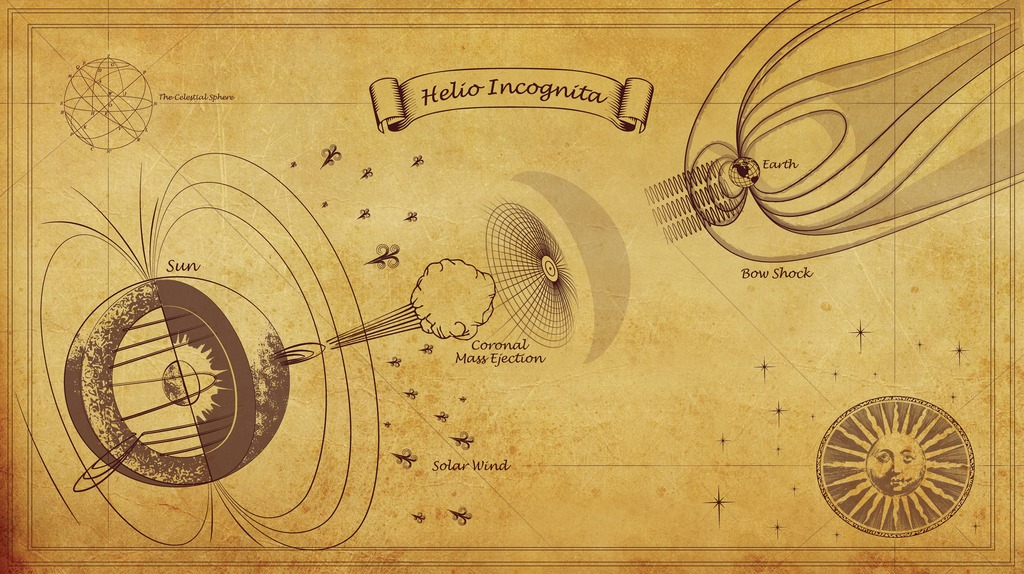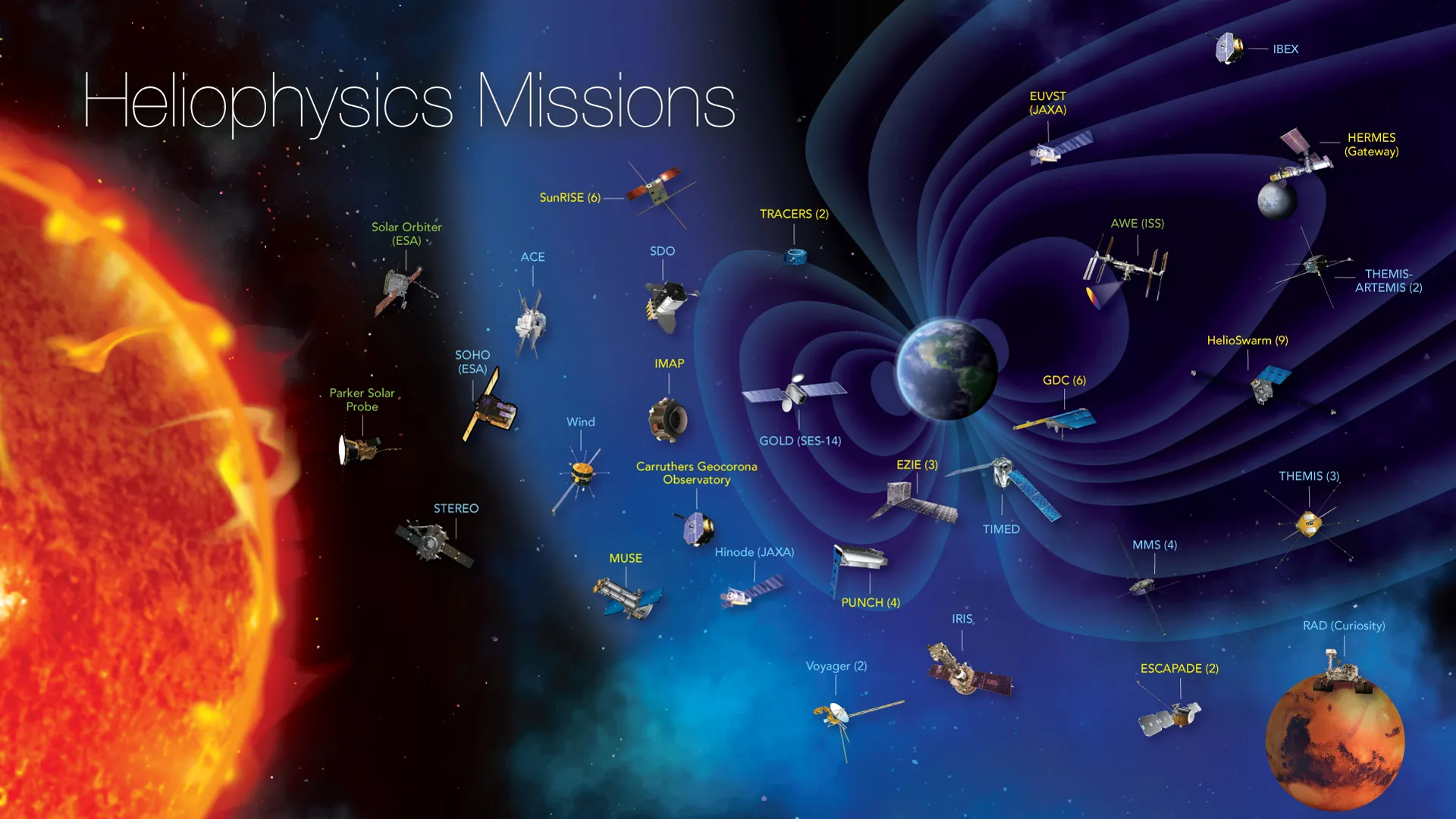NASA's Heliophysics Fleet Graphics (2024)
Mapping out this interconnected system requires a holistic study of the Sun’s influence on space, Earth and other planets. NASA has a fleet of spacecraft strategically placed throughout our heliosphere—from Parker Solar Probe at the Sun observing the very start of the solar wind, to satellites around Earth, to the farthest human-made object, Voyager, which is sending back observations on interstellar space. Each mission is positioned at a critical, well-thought out vantage point to observe and understand the flow of energy and particles throughout the solar system—all helping us untangle the effects of the star we live with.
The graphics below shows the Heliophysics Division fleet as of November 2024. Green indicates missions in operation, blue indicates missions in extended operation, and yellow indicates future missions. Numbers in parentheses indicate how many spacecraft the mission currently includes.

A high-resolution graphic showing NASA's heliophysics fleet with a text bar and color code indicating new and current missions.
Credit: NASA

A high-resolution graphic showing NASA's heliophysics fleet highlighting mission names only.
Credit: NASA

A graphic (sized for PowerPoint presentations) showing NASA's heliophysics fleet highlighting mission names only.
Credit: NASA

A graphic (sized at 1920 x 1080) showing NASA's heliophysics fleet with a text bar and color code indicating new and current missions.
Credit: NASA

A graphic (sized at 1920 x 1080) showing NASA's heliophysics fleet highlighting mission names only.
Credit: NASA

A high-resolution graphic showing active heliophysics missions only (as of November 2024) with a text bar and color code indicating current and extended missions.
Credit: NASA

A high-resolution graphic showing active heliophysics missions only (as of November 2024) with a text bar and color code indicating current and extended missions.
Credit: NASA

A graphic (sized for PowerPoint presentations) showing active heliophysics mission only (as of November 2024).
Credit: NASA
Credits
Please give credit for this item to:
NASA's Goddard Space Flight Center
-
Graphic designer
- Kristen Perrin (TRAX International)
-
Support
- Joy Ng (eMITS)
Release date
This page was originally published on Thursday, November 7, 2024.
This page was last updated on Thursday, November 7, 2024 at 3:12 PM EST.

